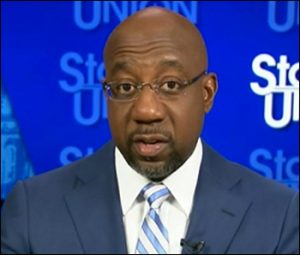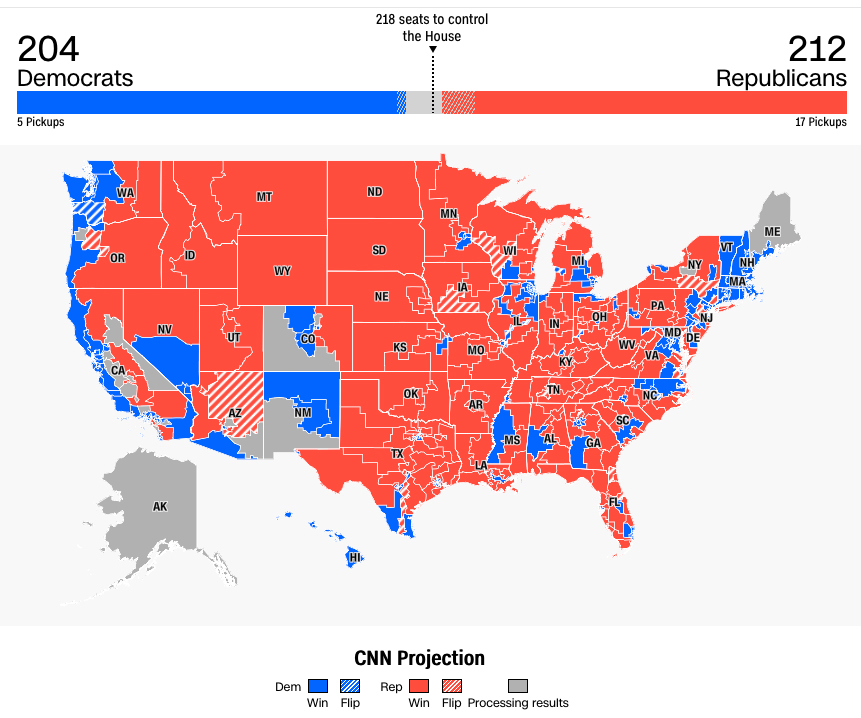By Jim Ellis — Tuesday, Nov. 29, 2022
Senate
Alaska: Sen. Murkowski Re-Elected — Over the Thanksgiving break, we saw several more races called. The complete results came in Alaska where the final tabulations, including the Ranked Choice Voting (RCV) rounds, were released and contests decided.As expected, Sen. Lisa Murkowski (R) was re-elected after nipping former State Administration Director Kelly Tshibaka (R), 43.4 – 42.6 percent in the aggregate vote, a margin of 1,914 votes. In the first RCV round, with fourth place finisher Buzz Kelley’s (R) votes being distributed, the race became even tighter, with Sen. Murkowski’s lead reduced to only 44.5 – 44.3 percent, a spread of just 339 votes.
The final result was easily predictable, and one could argue Sen. Murkowski really won her re-election when people voted to change the state’s election system in 2020. Initiated with support from the senator’s political organization, the hybrid jungle primary/Ranked Choice Voting system allowed Sen. Murkowski to skip what was her most vulnerable election, a partisan Republican primary. With four people now automatically advancing into the general election, the partisan nomination phase within the traditional election cycle was in effect eliminated. In 2010, Sen. Murkowski lost the Republican primary, but was re-elected when she won a write-in Independent campaign in that year’s general election.
House
AK-AL: Rep. Peltola Wins Full Term — After winning the August special election through the Ranked Choice Voting system to replace the late Alaska Rep. Don Young (R), at-large Rep. Mary Peltola (D-Bethel) has now clinched a full term after the state’s preliminary final vote count was released the day before Thanksgiving. The end result was predictable, especially when Rep. Peltola easily placed first in the aggregate count, with a 49-26-23 percent margin over former Gov. Sarah Palin (R) and businessman Nick Begich III (R).
The first round of Ranked Choice Voting, which eliminated distant fourth-place finisher Chris Bye (Libertarian), almost put Peltola over the top. In this round, against both Palin and Begich, Rep. Peltola scored 49.2 percent of the adjusted vote. This result meant eliminating Begich, who was the third-place finisher. The third RCV round easily went to Rep. Peltola, who defeated Palin on a 55-45 percent tabulation. The Peltola victory increases the House Democratic Conference to 213 members as compared to the Republicans’ 221 with one California race remaining outstanding.
CA-13: The Last One Outstanding — We now have 434 US House races projected and the final partisan division count comes down to the end result from California’s new 13th Congressional District in the Fresno area. This post-election period could go on for some time.
The aggregate count, with a projected 96 percent of the votes recorded, although these estimates have not proven particularly reliable throughout the California counting process, gives Republican agri-businessman John Duarte a 593-vote lead over state Assemblyman Adam Gray (D-Merced). The county with the largest outstanding vote at a 90 percent estimated recorded figure, is Stanislaus, which slightly favors Gray.
Depending upon this last outcome, the Republican House majority will be either 221-214 or 222-213. Another Speaker vote for California Republican Kevin McCarthy could also be critical in relation to how that internal race unfolds on Jan. 3.
We can expect further days before a preliminary count is revealed, and it is likely we will see a long period of vote challenges from both sides prior to final certification of a winner. The California election certification deadline is Dec. 16.
Governor
Alaska: Gov. Dunleavy Re-Elected Outright — One race that did not need a Ranked Choice Voting round was the Alaska governor’s contest. Incumbent Gov. Mike Dunleavy (R) won a second term in the aggregate count, scoring 50.3 percent of the vote against three other candidates.
In a distant second place was Democratic former state representative Les Gara who posted 24.2 percent of the vote, while former Gov. Bill Walker, again running as an Independent, followed. The latter man recorded 20.7 percent of the aggregate popular vote. In the final general election qualifying position was Republican former Kenai Borough Peninsula Mayor Charlie Pierce who managed to secure only 4.5 percent of the vote.
Gov. Dunleavy, who faced an aborted recall effort early in his tenure, is the first re-elected Alaska chief executive since Democratic Gov. Tony Knowles won a second term in 1998.







